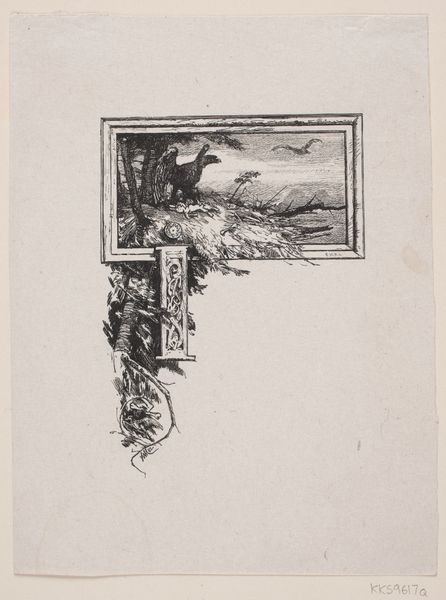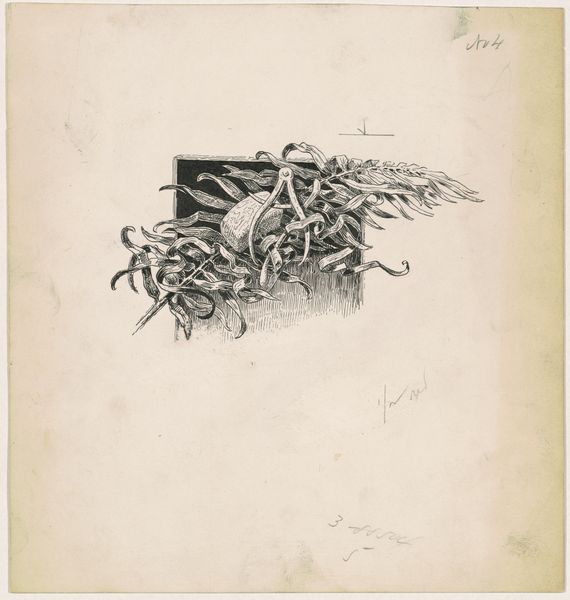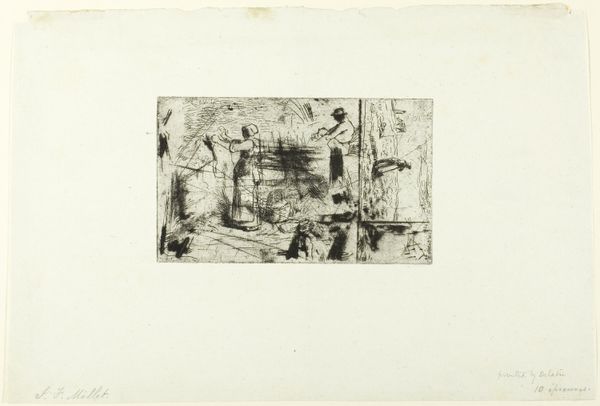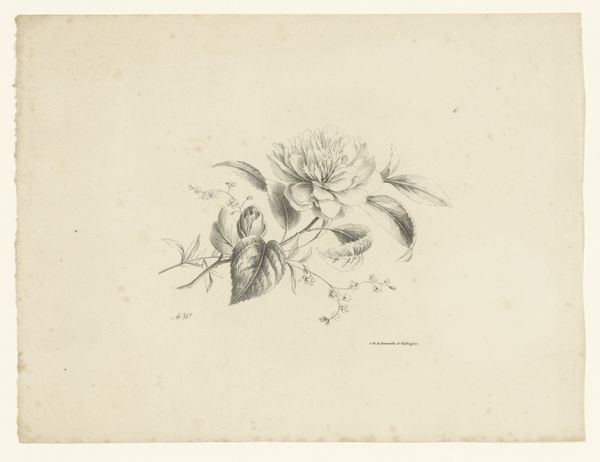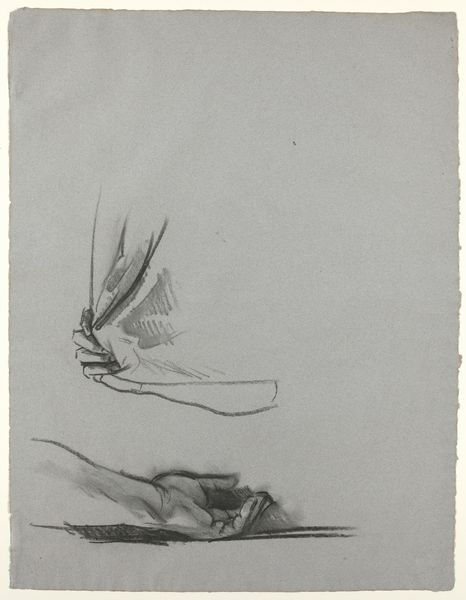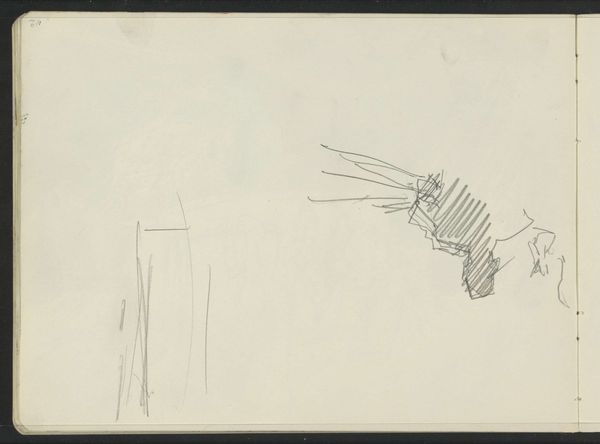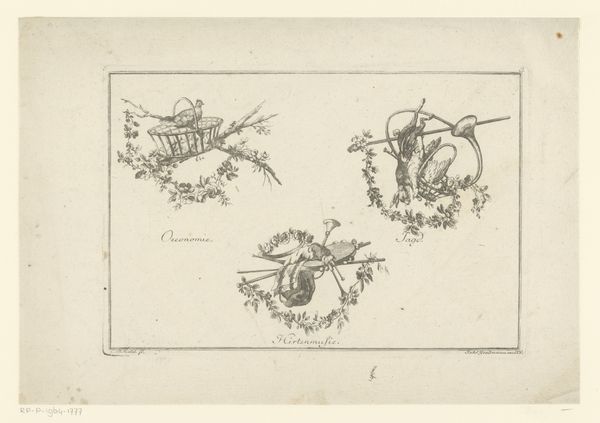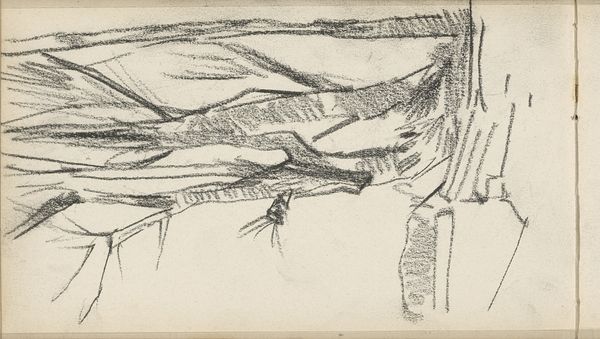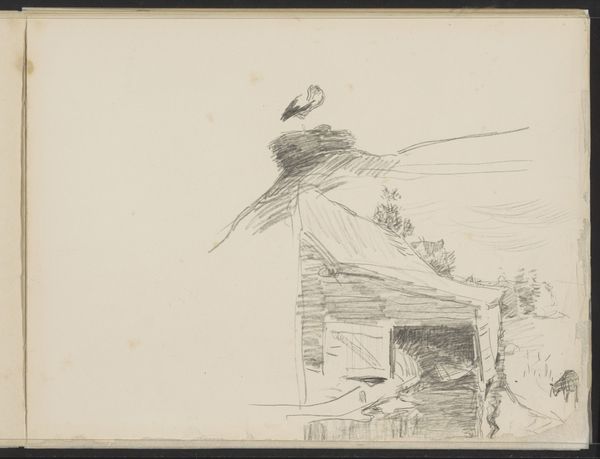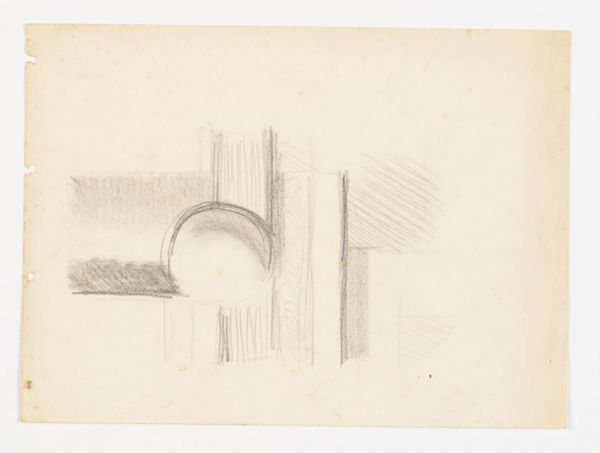
drawing, ink, pen
#
drawing
#
ink
#
geometric
#
pen work
#
pen
Dimensions: image (irregular): 7.94 × 15.24 cm (3 1/8 × 6 in.) board: 17.15 × 23.18 cm (6 3/4 × 9 1/8 in.)
Copyright: National Gallery of Art: CC0 1.0
Curator: This drawing, rendered in pen and ink, is called "Palette" by James Henry Moser and was created between 1890 and 1891. What are your initial thoughts? Editor: The immediate impression is one of stillness, almost like a botanical specimen preserved for study. The meticulous lines create a sense of order and delicate observation, doesn't it? Curator: Indeed. Placed in its time, this reminds me of the Arts and Crafts movement's ideals: to intertwine art with everyday objects, reclaiming beauty in a rapidly industrializing world. Do you see those themes echoed here? Editor: I do. There is something about the symbolic presentation that pulls me in. The palette, the ribbons, and even the sprig could signify more than a simple artist's tool. Perhaps representing the constraints on and embellishment of the creative space and life itself? Curator: Absolutely. It challenges us to consider not just the aesthetics of art, but its relationship to social identity. Consider the palette's confinement within the black border and then the adornment of ribbons: what societal "expectations" are the ribbons playing up against what constraints on artistic practice might be being invoked by the boundary? Editor: I see that. It adds a layer of social commentary that makes one wonder about Moser’s position as an artist navigating these pressures in his day. I wonder what personal and political values underpinned this composition? It hints at complex dialogues, really, if one considers how these were understood back then. Curator: Precisely. What may initially appear as a quaint still life carries layered narratives. Even something like Moser's artistic privilege cannot be divorced from the legacy of his society. And even in his embrace of natural forms, one can feel that tension. Editor: Right. In looking at these symbols here –the ribbons, leaves, and even that rigid border, a deeper truth emerges from the cultural fabric of his period. Art as beauty and decor but with a hint of resistance. It provides fertile ground for exploration! Curator: I agree; Moser's drawing encourages us to critically engage with both artistic form and social significance in turn-of-the-century art, thus moving towards broader, much needed change. Editor: It serves as a gentle reminder: look closely; history and feeling are always present in everything.
Comments
No comments
Be the first to comment and join the conversation on the ultimate creative platform.
